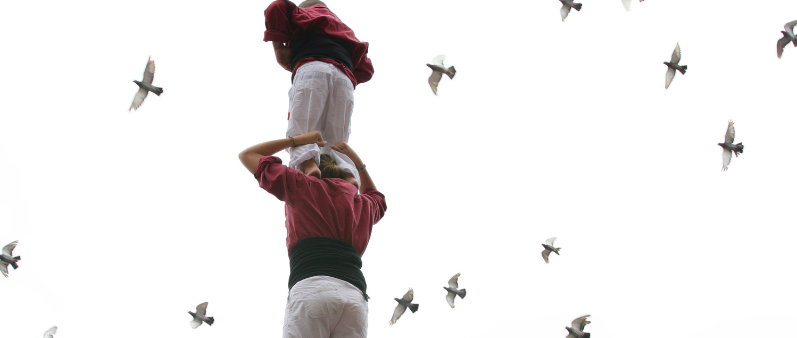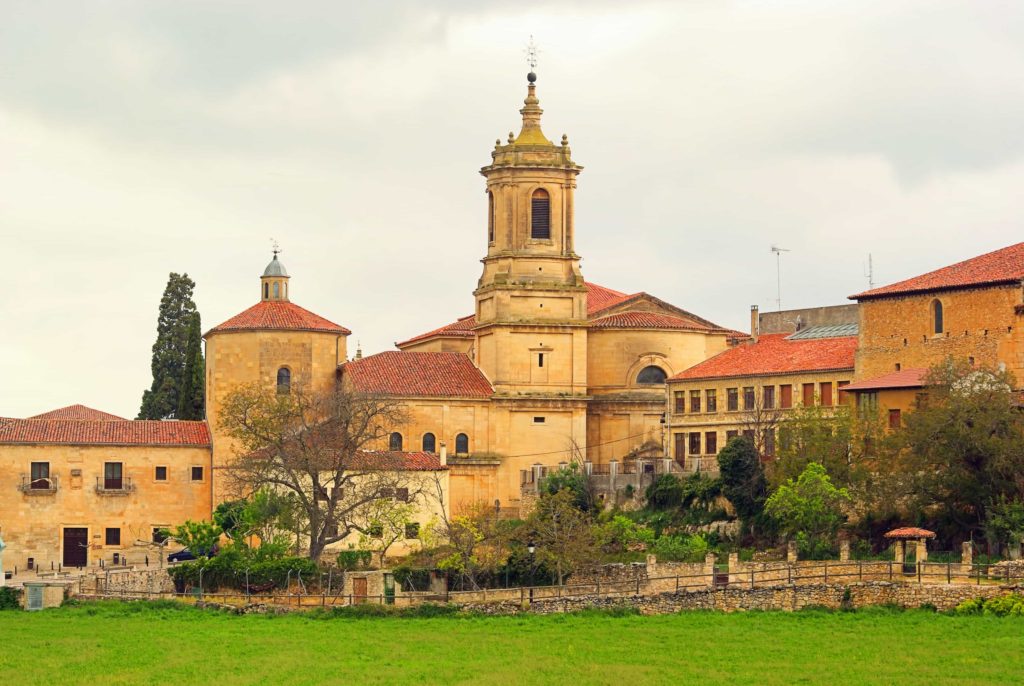
Best Spanish Festivals & Cultural Celebrations For Each Month of the Year
You have surely heard about several festivals in Spain that no one should miss. It is probable that you have traveled to Spain just to enjoy the most popular ones, like San Fermín in Pamplona, Feria de Abril in Seville, and Fallas in Valencia.
However, these represent just a tiny portion of the thousands of festivals that take place in Spain throughout the year. There are so many that you would need several years – or even several lives – to visit all of them.
Festivals – Fiestas – are celebrated because of different reasons and origins: historical, religious, gastronomical, athletic… but all of them have a common theme: eating and drinking.
Would you fancy a tour through the calendar?
January – Sacred History

The best place to start our tour is the Spanish language’s birthplace, Santo Domingo de Silos (Burgos, Castilla y León). There, a Romanesque monastery seems to defy time as its resident Benedictine monks still chant the hauntingly beautiful Gregoriano, medieval sacred music.
If you visit on the last Saturday of January, you can help commemorate La Fiesta de los Jefes, when the townspeople thwarted an attempted Moorish army raid. Revelers enjoy bonfires, races, equestrian rituals, and banquets throughout the night until morning breaks with religious prayers.
February – Love is in the Air
200 miles southeast, the medieval celebration continues. On the third weekend of February, Las Bodas de Isabel de Segura takes place in Teruel, Aragón. The town is famous for its legend of Los Amantes de Teruel, a tragic love story from the 13th century that did not have a happy earthly ending. The ill-fated lovers died of lovesickness but do remain in eternal union as they are buried together.
During that weekend, the town turns completely medieval. Every neighbor is disguised, and hundreds of events ensue, medieval markets, gastronomical contests, feudal tournaments, debates, campfires, pyrotechnics, games, parades, dances, and concerts…leading up to the main event, the recreation of the legend by around 400 actors.
March – Arrival of Spring
Skip the crowds at the hugely famous Fallas in Valencia on March 19th and head instead to the lesser-known but possibly more beautiful celebration in the Valle del Jerte, a group of towns in Extremadura. Fiestas del Cerezo en Flor (Cherry Blossom Festival) celebrates rural life, arts, literature, and food, set in the backdrop of the Valley’s spectacular landscape.
April – Flying Vegetables
Let’s head next to southeast Spain and the city of Murcia for the Spring festivals. The main event, El Bando de la Huerta, takes place on Easter Tuesday when the outdoor tapas gardens open, neighbors dance the jota, and parades stream through the city, with garden vegetables thrown from the floats. Careful, though, sometimes a flying lemon can really hurt your head!
May – Pure Andalusia
May is the time to travel to Córdoba, the city that was, for centuries, the cultural center of Europe, as well as a major Islamic capital in the Middle Ages.
The Patios de Córdoba Fiesta (The Cordoba Patios Festival) was added to UNESCO’s list of World Intangible Cultural Heritage sites in 2012. For one week a year, the secret courtyards of Córdoba are opened to the public. Privately owned and normally hidden from public view, these patios date back to Roman times and overflow with flowers, plants, and fountains. Traditional flamenco performances, wines, and tapas round out the fiesta.
Probably by now, you will have fallen in love with Andalusia, so let’s continue to explore this beautiful region and head to the ancient Moorish capital, Granada to enjoy las Cruces de Mayo (“May Crosses”).
Every plaza, balcony, window, and terrace in the city is decorated for the event with flowers, guitars, antiques, china, and even shawls. Neighborhood associations compete fiercely for the best cruz.
June – Fire and Wine
After such an abundance of flamenco and fiesta, you will likely want to rest in any of the hundreds of towns that celebrate La Noche de San Juan (The eve of St. John) – on the summer solstice. Parades, food contests, and celebrations precede the traditional bonfires on the beach.
Tired of the water that firemen threw to extinguish the fires? Then travel to Haro, La Rioja, to participate in a wine battle, La Batalla del vino de Haro. There you will be at the heart of the most popular wine region in Spain, Rioja, so do not lose the occasion to visit some wineries.
July – Garlic and Human Castles
Do you remember the quote “Spain smells like garlic”, falsely attributed to Victoria Beckham? Well, you will be able to check the authenticity of it when you visit several towns in Castilla y León, during their Feria del ajo.
If you are not passionate about garlic, just drive some miles east to admire the Torre humana de Ateca, one of the most famous human towers, also known as castells, that are built several times a year in some towns of the ancient Aragón kingdom.
August – Tomato Battles and River Races
Need to release some pent-up emotions and energy? There’s no better way than in an epic food fight! 160 tons of tomatoes are used as ammo in these massive tomato wars. Head to the Tomatina in Buñol, Valencia and cover yourself in tomatoes.
Now for the cleansing. Located in Asturias, in the foothills of the breath-taking los Picos de Europa mountains, you’ll find El descenso del Sella, the oldest calm water canoe race in the world.
By the way…don’t forget to stay till the end of the month for the Cabrales cheese competition!
September – Back to Rome
Tired of the Middle Ages? Why don’t you try a festival inspired by Roman times? Head to Cartagena, Murcia for the Fiesta de Cartagineses y Romanos commemorating the Second Punic War. The town, one of the oldest in Spain, was founded by the Carthaginians in 227 BCE and acquired by the Romans in 44 BCE, with the name of New Carthage (Cartagonova).
October – Flowers with Colombus
October 12th is the national day of Spain. The arrival to America by Cristopher Colombus is hailed, as the trip was financed by the Spanish crown. It is also the day of the patron saint of Spain, El Pilar, likewise the name of the famous Cathedral-Basilica in Saragossa, Aragón dedicated to the Blessed Virgin Mary. On this day, a floral offering is made outside of the Basilica, covering the whole patio with aromas and colors. The celebrations last about ten days, where processions, parades, troupes, concerts, and gastronomical events entertain the city.
November – Celtic Traditions
After the grape harvest, neighbors gather together around bonfires to roast chestnuts and drink the just pressed wine, cider, or grape liqueur. This ancient autumnal tradition, called Magosto, dates from the times of the Celts, and is still performed in many towns of the north of Spain and Portugal.
December – Not Christmas
La Fiesta del Estandarte is one of the oldest festivals in Europe and takes place on the last day of the year when in 1229 King Jaume I took the city of Mallorca from the Moors.
The royal standard is placed with great solemnity along with floral offerings, concerts, poetry readings, and gastronomical contests. I can easily imagine what can happen when history and New Year’s Eve are mixed!

No Comments for "Best Spanish Festivals & Cultural Celebrations For Each Month of the Year"